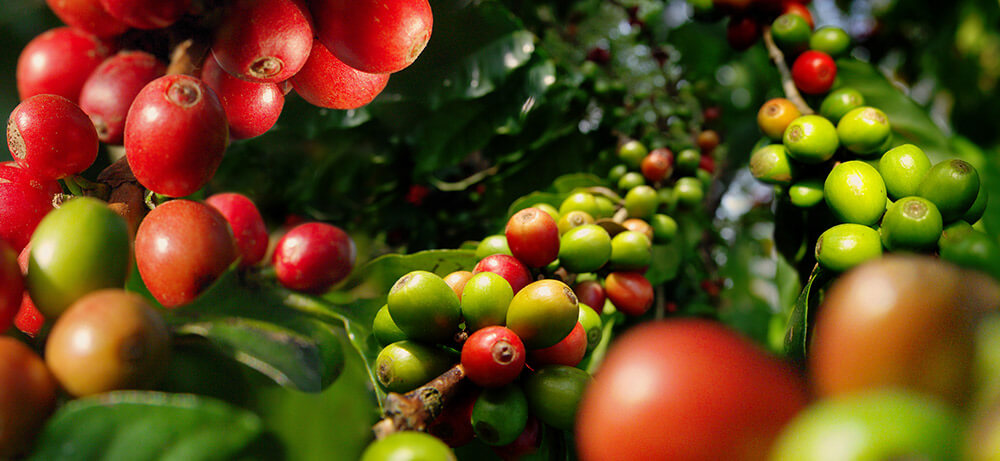International Harvesters
Agriculture is a diverse industry sustained by its international harvesters, the people around the world who produce all kinds of crops under very different conditions. Imagine driving past fields of fresh flowers instead of acres of corn and soybeans. No matter what kind of crop they’re producing, farmers understand the high risks involved in farming. The unpredictable nature of agriculture is one reason farmers choose to protect their investment with crop insurance. Every year farmers around the world accept the risks and work to supply the world with everything from flowers to food.
Flowers
Cut flowers grown as a crop are as profitable as they are beautiful. Flower production is a multi-billion dollar industry. A majority of the world’s flowers are grown in the Netherlands with Colombia, Kenya, and Israel also contributing to the global floral market. The floral agriculture industry, also called floriculture, stimulates the local economy and attracts tourists to view its colorful fields. Horticulture experts breed new flower varieties every year. Fresh cut flowers are sold in daily flower auctions and shipped around the world in refrigerated trucks and planes. The Netherlands is known for its tulips, and Colombia and Kenya are recognized for their roses, but each country produces a wide variety of flowers. The US has increased its flower production with small farms emerging across the country. Most of the planting and harvesting is done by hand, so flower farms are typically around five acres.
Coffee
People live off of coffee. For coffee farmers, that saying is quite literal. Coffee beans are harvested from inside cherry-like fruits that grow on trees. Young trees take three to five years of growth before they start producing the small red berries. Ripe coffee cherries are usually picked by hand from the tree or the ground, but some operations use machinery to strip cherries off the tree. Once the berries are harvested and cleaned, the coffee beans inside are removed. Farmers retrieve the beans by either drying the fruit or squeezing out the juices. Before they’re brewed into your morning coffee, the green coffee beans are roasted. The less cooked beans are sold as light-roast and the more cooked beans are classified as dark-roast. Coffee is grown in mountainous, tropical areas around the world. Brazil, Vietnam, and Indonesia are some of the world’s top coffee producers.

Rice
Rice grows in a variety of conditions. The environment where it’s grown is classified as either upland or lowland, and irrigated or watered by rainfall. While Southern China is the world’s top rice producer, many other countries produce the crop. Different varieties of rice grow in almost any environment. It’s grown in Bangladesh, Japan, Nepal, Egypt, Australia and even in the US. Farmers in Louisiana, California, Arkansas, Mississippi, and Texas have all produced successful rice crops.
Leveling is an important first step to prepare for a new rice crop. If the land is not level, the water will pool unevenly and affect yield. Terraces hold the water in place, keeping the rice crop in roughly six inches of water. Irrigation systems help maintain the necessary water level in the paddy fields. If the climate is warm enough, rice farmers can take advantage of two growing seasons a year. Before harvesting the rice crop, the fields have to be drained and the plants must be dried out. Once the rice is dry it can be cut and gathered into sheaths. Mechanized systems for rice harvesting are available, but much of the labor-intensive process remains done by hand.
Cocoa
Cocoa trees grow in hot, wet environments along the equator. Many cocoa farms are located in remote regions of Africa, Asia, and Latin America. The world’s chocolate addiction is supported by a large number of cocoa farming operations working on relatively small areas of land. Cocoa trees produce two harvests of cocoa pods every year. The pods are cut from the trees and split, revealing several individual cocoa beans inside. Once dried, cocoa beans will last for years before going bad. This gives farmers plenty of time to transport them to factories where they will be made into delicious chocolate treats.
Chocolate producers receive large profits every year, but the cocoa bean producers often live on a small fraction of that. To preserve cocoa bean production, global initiatives for sustainable cocoa farming are gaining support. The trees are sensitive to disease, wind, and pests, so it’s a lot of work to keep them alive. Cocoa trees and cocoa bean yields are susceptible to the growing conditions of each specific year. One solution for more sustainable cocoa production is to make crop insurance more accessible to these farmers.
Crop insurance helps protect farmers around the world and allow them to continue producing everything from flowers to food. The agriculture industry thrives on international cooperation with farmers around the world cultivating their crops, and therefore cultivating the global economy. Much of farming is unpredictable, but we can always count on people around the world coming together to support agriculture.
